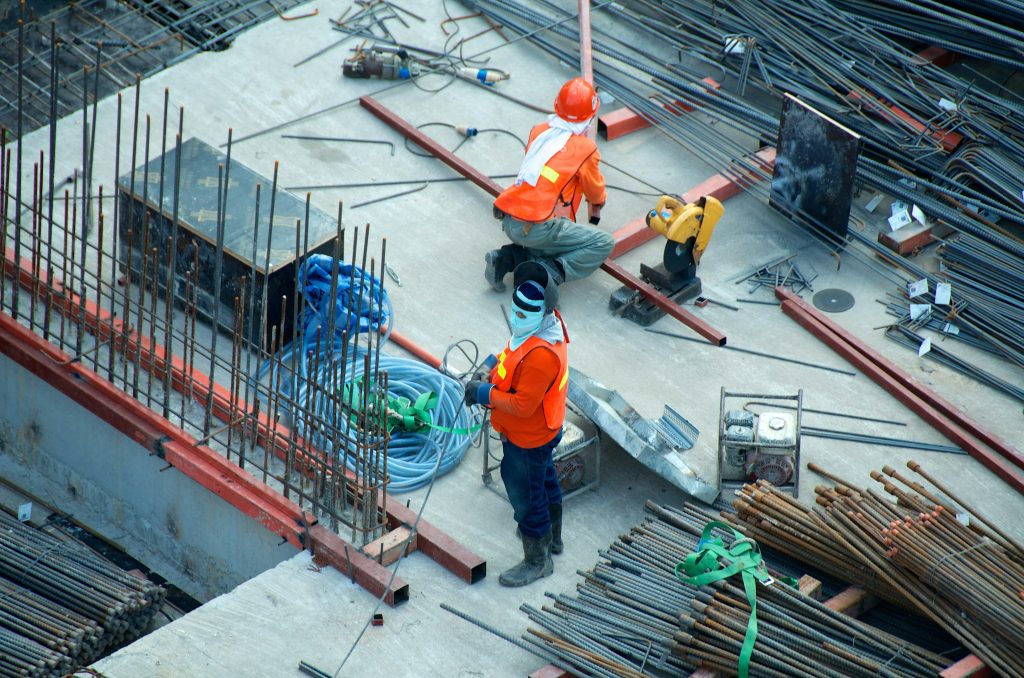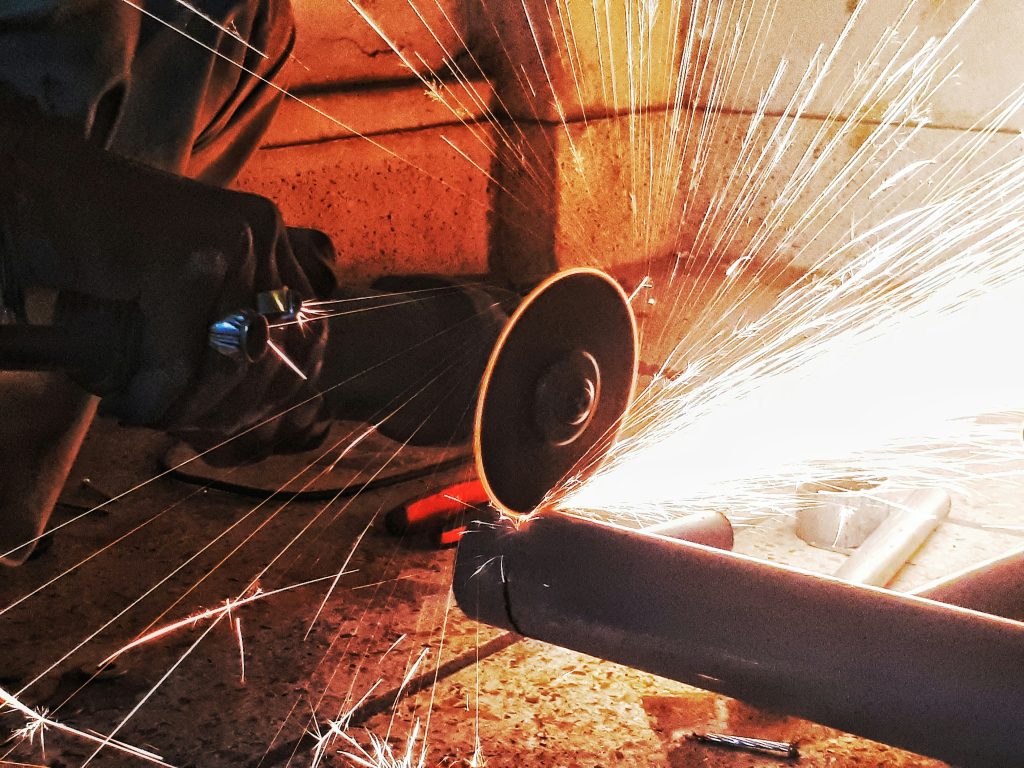Exploring the Basics of Carbon Steel
Carbon steel is a widely used material in various industries due to its versatile properties and applications. It is essentially iron with varying levels of carbon as the main alloying element. This composition allows for different types of carbon steel, including low, medium, and high-carbon varieties.
What is Carbon Steel?
Composition and Types
The composition of carbon steel consists of iron alloyed with small amounts of carbon, manganese, and silicon, with sulfur and phosphorus present mostly as impurities. The carbon content has a significant influence on the mechanical properties of steel. As the carbon content increases, the steel typically exhibits higher strength and lower ductility. Medium and high carbon steel are readily heat-treated to further enhance their mechanical properties.
Why is Carbon Steel Widely Used?
Applications in Various Industries
The global market for carbon steel was estimated at USD 950 billion in 2022 and is projected to reach USD 1.3 trillion by 2030, reflecting its widespread use across industries. Carbon steel accounts for approximately 90% of all steel production globally, making it a dominant material in construction, automotive manufacturing, infrastructure development, and machinery production. Its versatility makes it an ideal choice for structural components, machinery parts, tools, and consumer goods.
China and Chinese companies lead world steel production, followed by India and Japan. The dominance of these countries underscores the extensive utilization of carbon steel in manufacturing processes worldwide.
Qingdao Sunrise New Materials Co., Ltd. (referred to as “Sunrise New Materials”) is an international and professional supplier of steel and non-ferrous metal raw materials. As a one-stop supplier of steel and metal raw materials, Sunrise New Materials has become the preferred supplier of steel and fiberglass products for tens of thousands of customers worldwide, with a strong supply chain network, solid professional knowledge, and reliable services.
How Long Can Carbon Steel Last?
Carbon steel is renowned for its exceptional durability, making it a popular choice in various industries. Its longevity is influenced by several factors, including environmental conditions and its comparison with other metals.
The Lifespan of Carbon Steel
The lifespan of carbon steel varies depending on the environmental conditions it is exposed to. In ideal conditions, carbon steel can last for decades without significant degradation. However, when subjected to corrosive environments or high levels of moisture, its lifespan may be significantly reduced. Proper maintenance and care can also play a crucial role in extending the longevity of carbon steel components.
Average Durability in Different Conditions
In dry and non-corrosive environments, carbon steel can endure for an extended period, showcasing its remarkable durability. However, when exposed to moisture or chemicals, the lifespan of carbon steel may diminish due to oxidation and corrosion. This highlights the importance of considering environmental factors when assessing the longevity of carbon steel.
Comparing Carbon Steel with Other Metals
When comparing carbon steel with stainless steel, it becomes evident that each material possesses unique strengths and weaknesses that impact their respective lifespans.
Strengths and Weaknesses
Carbon steel offers exceptional strength rivaling and sometimes exceeding stainless steel, particularly in large structural components such as tubes, beams, and rolled sheet steel. It is also well-suited for applications requiring high stress and impact due to its relatively high carbon content.
On the other hand, stainless steel excels in corrosive or humid environments due to its corrosion-resistant properties derived from chromium. This makes it an ideal choice for applications exposed to moisture or other corrosive elements. While carbon steel is much cheaper than stainless steel and offers impressive strength and hardness, it is susceptible to oxidation when exposed to moisture.
In most contexts, high-carbon steel stands out as the strongest type of carbon steel encountered. Its greater number of carbon atoms in the lattice structure increases its hardness, strength, and wear resistance compared to stainless, medium-carbon, and low-carbon steels.
The construction industry benefits significantly from using carbon steel due to its long-term durability and ability to withstand natural disasters like earthquakes and tornadoes. Additionally, it offers excellent forming and welding capabilities along with endurance in case of calamities like earthquakes.
Factors Influencing Carbon Steel’s Longevity
When considering the longevity of carbon steel, it is essential to examine the environmental impact and the significance of maintenance and care. These factors play a crucial role in determining how long carbon steel can endure in various applications.
Environmental Impact on Carbon Steel
Effects of Moisture and Chemical Exposure
The exposure of carbon steel to moisture and chemicals can have a profound impact on its lifespan. In environments with high humidity or frequent exposure to water, carbon steel is susceptible to oxidation, leading to corrosion over time. The presence of corrosive chemicals can further accelerate this process, compromising the structural integrity of carbon steel components.
Low carbon steel, in particular, is widely favored in construction due to its exceptional forming and welding capabilities. It offers advantages such as flexibility, ductility, and plasticity, making it an ideal choice for building materials that require endurance during calamities like earthquakes. This versatility contributes to its widespread use in constructing buildings, bridges, automotive components, tools, shipbuilding, piping, and structural members.
Furthermore, the applications for carbon steel are almost limitless due to its high strength, hardness, low cost, resistance to stress and breakage, and wear resistance. Its durability makes it an indispensable material across various industries.
Maintenance and Care
Best Practices for Extending Lifespan
Implementing proper maintenance practices is vital for extending the lifespan of carbon steel components. Regular inspections for signs of corrosion or degradation allow for timely interventions to prevent further damage. Applying protective coatings or treatments can provide an additional layer of defense against environmental factors that may compromise the integrity of carbon steel.
In the construction industry specifically, carbon steel’s strength and durability make it a preferable choice for building materials. Its ability to withstand natural disasters like earthquakes underscores its reliability in critical infrastructure projects.
Adhering to best practices for handling and storing carbon steel components also contributes significantly to their longevity. Proper storage conditions that minimize exposure to moisture and corrosive elements are essential for preserving the integrity of carbon steel over time.
Preserving Carbon Steel
Innovative Treatments and Coatings
Preserving carbon steel requires advancements in protection technologies. One such advancement is the development of coatings to mitigate fouling and corrosion, ensuring the longevity of carbon steel components. Patent documents have highlighted the use of commercially available coatings, such as Sulfinert, an amorphous silicon coating, to protect carbon steel surfaces from deposits and corrosion. Additionally, manufacturing methods have been developed to produce corrosion-resistant clad or lined carbon steel tubular for transporting oil and gas, providing economic advantages over solid corrosion-resistant alloy (CRA) tubular materials like stainless steel and nickel alloy.
The role of these innovative treatments and coatings is crucial in extending the lifespan of carbon steel in various applications. By leveraging protective coatings and advanced manufacturing techniques, carbon steel can endure harsh environmental conditions and resist degradation over time. These advancements not only contribute to the sustainability of carbon steel but also ensure its continued utilization across industries.
The Role of Recycling in Sustainability
Recycling plays a significant role in contributing to the longevity of carbon steel. The recycling process allows for the reuse of carbon steel materials, reducing the need for new production and minimizing environmental impact. This sustainable approach helps preserve natural resources while promoting the continued use of durable carbon steel in various applications.
Furthermore, recycling contributes to the circular economy by reducing waste and energy consumption associated with manufacturing new materials. By incorporating recycled carbon steel into production processes, industries can minimize their environmental footprint while maintaining high-quality standards. This sustainable practice not only extends the lifespan of carbon steel but also supports a more environmentally friendly approach to material usage.








